TOP Project is defined as a tool to help Governments and not only as a technological tool but also as a human team, knowledge and organization that will make possible standardize this new sector. But also, every thing is supported on a strong technological base. This technology is present in the management of all the system, in the predictive analysis of the trends future sector, but also it was presentin its origin, even before knowing the viability of the project. For this purpose, TOP team was supported by engineers and technologists with the aim of objectify the reasonings that the professionals of the sector had after many years of experience ingovernmentals trips. Before describing these first tools, we will read a first document segment wrote by the engineer Project manager.
[...]The system will be an applicatif based in the latest software technologies and algorithms. Developed over open-source platforms and with a strong consultative factor, it is meant to implement math concepts with scientific basis to problems detected in tourism sector.
Current market evolution and high competition in all sectors have produced that the excellence become an aim to all involved persons who adressed in a service. Providers wish to create an exclusive confort space for their clients, likewise clients of any segment move with the high expectations that themselves could imagine.
To make these clients to obtain the satisfaction level they expect, all service providers should know all their clients details and preferences. This is not possible in a globalized world in which we all daily traveland where the prerequisite of many of us is to discover, try and change.
The best math approximation that we can aplly for this problem is a fashionable term, segmentation. Providers of all around the world have decided to segment their clients to serve them better and mainly to allocate their resources to those segments where they think to be good and profitable. Paradoxically, these same providers use to segment their clients without reasonable grounds nor proven variable. They don`t take into account that clients are changeable and that they should move into segments a according to the needs they could have, mathematically this concept is as similated to the variable of change.
Is there any solution? No, it isnt. But we can make aproximations and implement cognitiveand learning systems, in other words, systems that depending on thestored experience correct error margins as a result of human in estability been (try,discover,etc).Supported on Data Mining algorithms and on cognitive learning theorems joinly with a high data value, TOP will be able to categorize clients and providers (clustering).
[...]As mentioned above, this is only a first thought that the engineer team made after the first discussions with TOP partners. From the non, a project of a specification requirements, information analisys and semantic segmentation was developed.
How was it made?
The best way to explain it would be understanding the implementation phases of the system. The main ones are detailed below, such as a brief description of them.

In this case, the mathematical concept that we have to use is the induction. Consultants encharged of the implementation of this system, made interviews to experienced professionals ingovernmentals trips.
Their aim was to create the questions archive that they were made to clients in order to dispose of a wide variety of information. Applying algorithms such as "COBWEB" to the expexted answers, they disposed of a realiable rank to make appropiate questions.
All these requirements were protocols free, in other words, it was all based in the methodology for taking requirements: "DoRCU", storing each piece of data collected in a system explored in the final phase and guaranteeing that all was going to be make in a correct and objective way.

It was the moment to know the detail about clients real neccesities. The best way for them was to ask themselves. Interviews started with those that we could call clients of governmental trips. All the information collected from the surveys were stored into survey systems.
Limesurvey was the open-source application that served as an ally to the engineering team. It is just a software to make guided surveys, storing data into a structured information storage.

With the quantity and variety of data stored, the analysis work started, using for this purpose learning algorithms and clustering. The aim of this phase was the creation of segments that categorize clients depending on their neccesities.
All this work was also supported by a guided system, in this case "Weka" was used, as a mining data platform. This software provides hundred of algorithms and it is use by the main companies and universities.
This segmented and validated information was taken as a basis for making protocols of action for each of the specified sectors.

Clients needs were already available, but that was not enough, because the sector is not only composed by clients, but is rather a compendium of clients and providers. In this case, it was not possible to make personalized interviews to providers, due to the quantity of tentative providers that made that the viable sample was not representative at all.
In order to validate that the requirements obtained from clients governmental trips were the same ones required to providers, a social-scientific survey was made, in other words, some questions were made to providers in which the results to the questions were not important by itself but for the entire set.
One of the examples is detailed below:
A provider employee that is encharged of governmental trips is asked about which is the name of the person that answers the phone when a budget is required for this type of trips. His answer was David Zapata.
Many questions after and with a previous situation as an example, the same employee was point to solve a problem that was taking place in a room of a governmental delegation and in that case, where must he phone and who would answer the call. His answer was John Smith.
The analysis conclusion was for this case that the stablisment would need a specified department for governmental trips, since the interlocutor was changed, something that could not happen as precondition.

It is very important to feed the system with the reality, in other words, is very important the feedback that clients and providers could give about services already done. For this purpose, TOP will manage making random surveys to providers and clients on which its own learning will be based.
This cognitive learning is the base of what is known as artificial intelligence, basically, the system will apply corrective factors to the algorithms implemented previously so that the variable of change get stronger in the questions made to providers such as in the segments of categorisations of clients. The aim is to create tentatives changes in the norm and in the protocols of action.





